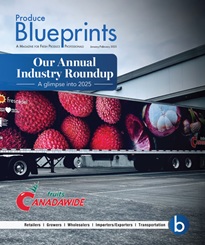Shipping
Joe Carlon, president of Joe Carlon & Associates, Inc. notes that meeting the new California Air Resources Board (CARB) requirements for 2014 will be an added challenge for business owners in Salinas and throughout the state of California.
Designed to significantly reduce particulate matter and nitrogen emissions from diesel vehicles, Carlon explains that CARB not only affects over-the-road trucks, but also farm tractors, generator sets, backhoes, and motor graders. “Anything with a fossil fuel engine over a certain horsepower” will be affected, he says, and unfortunately, the “requirements are making junk out of a lot of good equipment.”
Travis Lee of Dawn Transportation, Inc. commented, “Many customers are considering rail over conventional truck transportation due to the high rates out of California,” which he believes are primarily due to CARB restrictions. “Many trucking companies we have done business with for years are no longer able to come into California, therefore, there is a shortage of trucks and rates go up.”
Hours of service changes are also having a major impact on truckers, especially in the perishables industry. “Trucks hauling produce are different than freight haulers; we go like blazes to get somewhere, then we sit for sometimes days waiting for the next turn,” Carlon remarked.
With drivers now unable to use this downtime as break time, life is much more complicated. They can’t choose driving and break times when most convenient, as the new regulations require drivers to be on the clock for 70 hours before taking the mandated 34-hour break. With produce, Carlon says, “We don’t always have that luxury.”
Do the Math
Monterey County’s annual crop production value reached over $4.1 billion in 2012, with leaf lettuce, spinach, strawberries, and wine grapes propelling a 7 percent increase from 2011.
Salinas’ two leading crops are leaf lettuce and strawberries, followed by a variety of other vegetables and fruit including head lettuce, broccoli, cabbage, celery, cauliflower, mushrooms, artichokes, and raspberries. Other top crops include peas, onions, carrots, rappini, radicchio, kale, asparagus, and lemons.
Vegetables continue to remain highest in production value followed by fruit and nuts; in 2012, lettuce represented over half of revenues at 53 percent, with broccoli (13 percent), celery (11 percent), strawberries (7 percent), and cauliflower (3 percent) rounding out the top five.
More than 740 million pounds of vegetables and fruit were exported, with the bulk (65 percent) going to Canada, followed by Japan (11 percent), Taiwan (10 percent), Mexico (5 percent), Hong Kong (3 percent), Korea (3 percent), and Singapore (2 percent).



